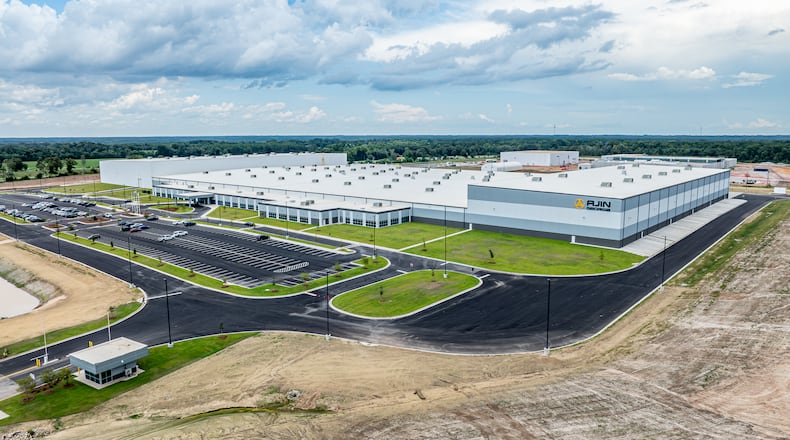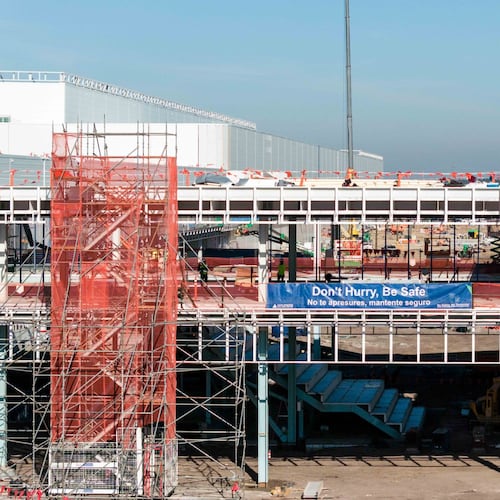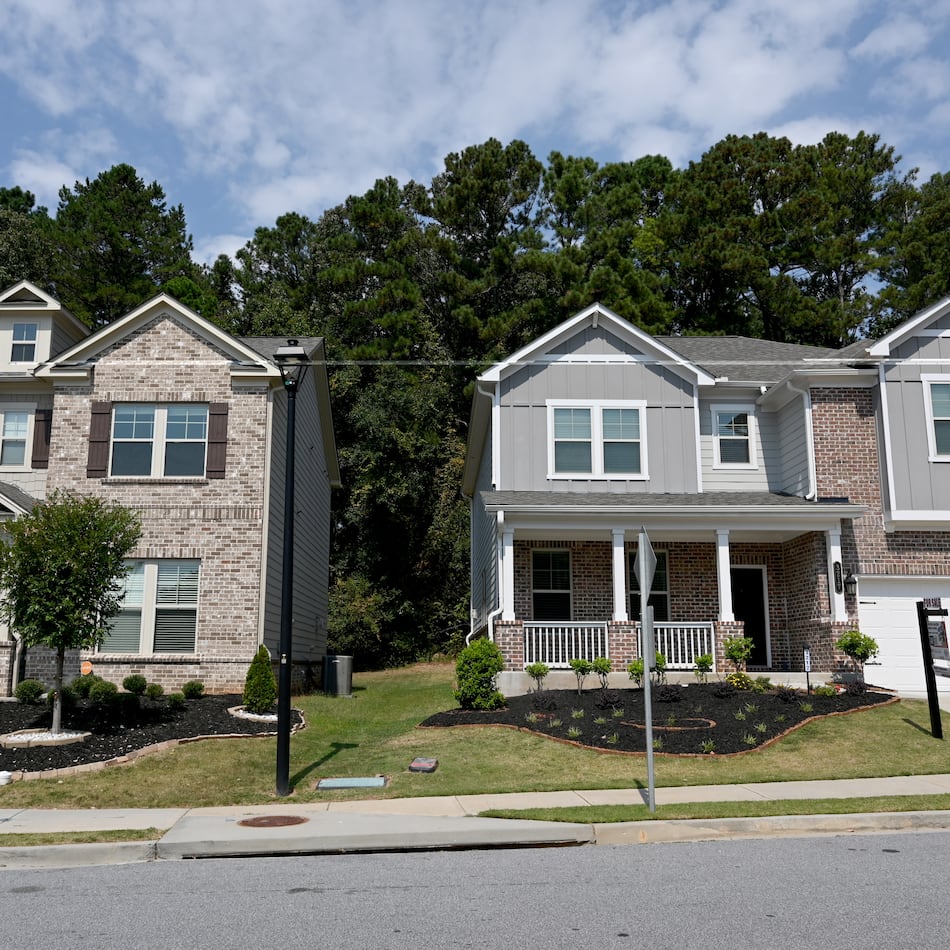REGISTER, Ga. — Six miles outside this South Georgia town without a stoplight, robotic machinery outnumbers the farmers who live nearby.
An automated armada of robotic arms rotate door frames and cause sparks to fly throughout the factory that’s roughly the size of 15 football fields. The facility by Ajin Georgia, which opened July 18, was a pad of dirt less than 14 months ago, but it’s now a regional employer that’s producing vehicle parts for the largest economic development project in state history.
New factories like Ajin’s facility along I-16 are sprouting across Coastal Georgia faster than the surrounding fields of soybeans and peanuts. The network of suppliers is trying to match the breakneck pace of Hyundai Motor Group as the automaker prepares to open its $7.6 billion electric vehicle factory in Bryan County.
“The Hyundai schedule is the Bible,” said Steven Kim, vice president and preconstruction director at Kajima Building and Design Group (KBD Group), the contractor that built Ajin’s plant. “All the vendors have to show that they will honor that schedule.”
Historically not an automotive production powerhouse, Georgia has recently rewritten that reputation, especially as the industry transitions to electric. In addition to Hyundai’s self-described Metaplant, where the company has promised to hire 8,500 people, Georgia has courted Rivian’s $5 billion EV factory an hour east of Atlanta, an expansion to Kia’s plant in West Point and several EV battery manufacturing facilities.
Those projects have created ripple effects as rural communities see industry moving in. Suppliers are providing thousands with new employment opportunities in economically depressed areas, but their scale presents growing pains in areas strapped for housing options that have long been defined by agriculture.
“The change is difficult for a lot of people here, because it’s a lot of change in a relatively short period of time,” said Benjy Thompson, executive director of Bulloch County’s development authority.
Credit: Courtesy Hyundai Motor Group Metaplant America
Credit: Courtesy Hyundai Motor Group Metaplant America
Within days of Hyundai announcing its Metaplant in May 2022, local leaders within driving distance of the 3,000-acre project site in Bryan County started receiving calls from Korean companies looking to erect their own factories. As of late July, 17 suppliers have announced projects to produce vehicle parts for Hyundai — mostly in the counties near Savannah.
The 17 suppliers combine have promised $2.7 billion in new factory investment and almost 7,000 jobs.
Thompson said Ajin called him a week after Hyundai’s announcement, and he received dozens of calls from other prospects in the following months. The town of Register, where Ajin landed, has a population estimate of 157. The factory is expected to employ 630.
Bulloch County, which surrounds Statesboro, so far has landed three suppliers that combine for $562 million of investment and about promised 1,250 jobs.
“If we had gotten just Ajin, we would have felt like we hit a home run,” Thompson said. “But when we were able to land three of the suppliers. … We hit more of a grand slam.”
From decline to growth
Ed Moon, city manager of West Point near the Alabama line where Kia opened its factory more than a decade ago, said few things can reverse a stagnant community like a vehicle factory.
Located 80 miles southwest of downtown Atlanta, West Point was among a pocket of Georgia along the Chattahoochee River decimated by the collapse of the region’s textile industry. But now, the area is defined as an auto town after Kia, a Hyundai subsidiary, opened a manufacturing plant in 2009, becoming the state’s sole automaker after the closures of factories from Ford and General Motors.
Credit: Hyosub Shin/AJC
Credit: Hyosub Shin/AJC
“For us, the automotive industry basically changed our community from one of decline to one of continual growth,” Moon said.
Kia acts as the economic engine for the area, employing about 3,000 workers. The suppliers that flocked to the area arguably made just as much of an impact, employing more than 4,100 workers, according to West Point Economic Development Director Meghan Richardson.
That investment didn’t stop once Kia’s factory began pumping out Sorento SUVs. A few of Hyundai’s suppliers chose locations in nearby Coweta, Harris and Henry counties to also support Kia as it incorporates EVs into its assembly lines.
Because they bring supplier networks in tow, auto plants often command large public incentive packages as states vie for the jobs and investment. Georgia’s factories are no exception.
When Kia first came to West Point, it received about $469 million in state and local incentives. Hyundai struck a record-setting $1.8 billion incentive package with state and local leaders for its Metaplant, with the total amount based on it meeting jobs and investment goals.
Suppliers generally don’t demand the same type of taxpayer subsidies, because they’re trying to locate near their associated automaker. All 17 of Hyundai’s suppliers likely qualify for job creation tax credits in state law. Twelve suppliers received discretionary grants to assist with site preparation and machinery and equipment costs, totaling about $22 million, according to the Georgia Department of Economic Development.
‘In need of everything’
Since announcing their projects, the suppliers have been on the clock to build their facilities, hire their workers and meet Hyundai’s demanding timeline.
The first phase of the 15 million-square-foot Metaplant — more than 15 times bigger than the Ajin facility by floorspace — is likely to open during the fourth quarter of this year, and members of the supplier network who talked to The Atlanta Journal-Constitution said they felt the time pressure.
Credit: Zachary Hansen
Credit: Zachary Hansen
Mike Simpson, vice president and business unit leader at KBD Group, said his firm was paid $111 million to build Ajin’s 850,000-square-foot facility near Register. During the 13-month construction period, his company had to overcome raw material shortages, like steel and concrete, because so much was being built across Coastal Georgia at the same time. The same applied to labor.
“With the (Ajin facility) being so close to the Hyundai project, it limited (the contractors and suppliers) that we could get that would be interested in our job,” Simpson said.
Hannah Mullins, the executive director of the Candler County Industrial Authority, said her agency held a job fair this summer to find workers for DAS Corp.’s $35 million seat manufacturing plant in Metter. About 750 people showed up.
“The people who are here are hungry for jobs,” she said, adding that two-thirds of Candler’s workforce currently drives to neighboring counties for their jobs. “As far as advanced skilled manufacturing, we don’t have a lot of that here.”
Credit: Katelyn Myrick
Credit: Katelyn Myrick
DAS Corp. expects to hire at least 300 workers for its factory — almost as many employees as the number of parts that comprise their car seats.
Mullins said the rush of jobs brought new attention to her county’s housing options, or lack thereof. She said a developer plans to build about 140 townhomes near the industrial park containing plants from DAS Corp. and fellow supplier Doowon Group.
“We don’t have rentals. We don’t have workforce housing. We don’t have executive housing,” she said. “We’re in need of everything.”
Thompson, with the Bulloch County authority, echoed those challenges, saying it will take time, housing studies and other planning for surrounding communities to absorb the coming growth. But he said that is better than the alternative facing many of Georgia’s small towns, which are steadily bleeding residents and job prospects.
“Those towns are dying,” he said. “Ours is looking at some challenges for sure, but they’re challenges of opportunity. I think that’s very exciting.”
About the Author
Keep Reading
The Latest
Featured








